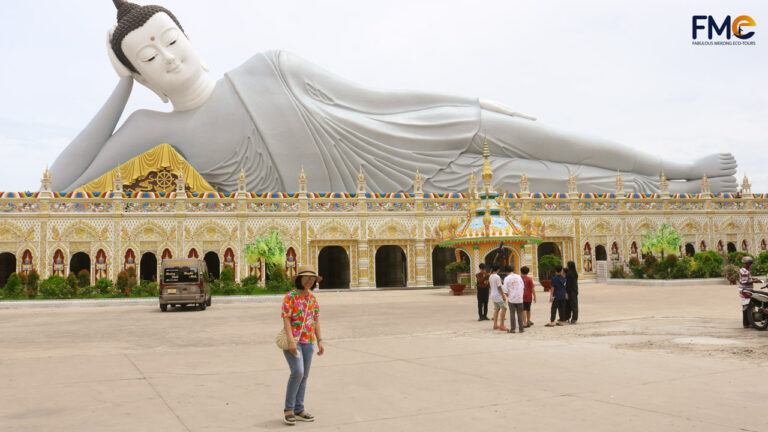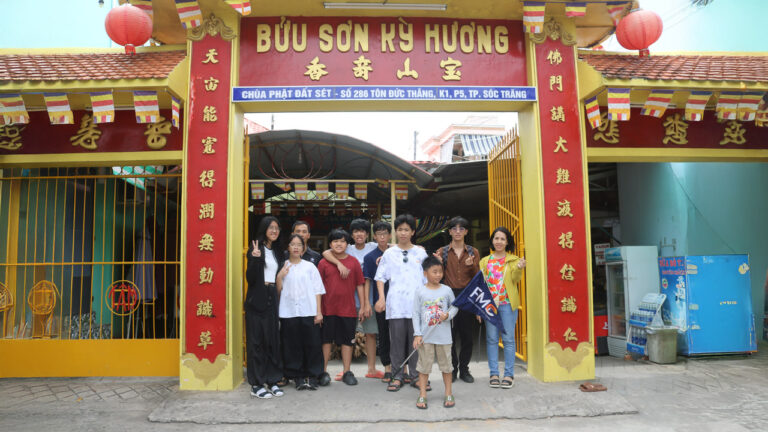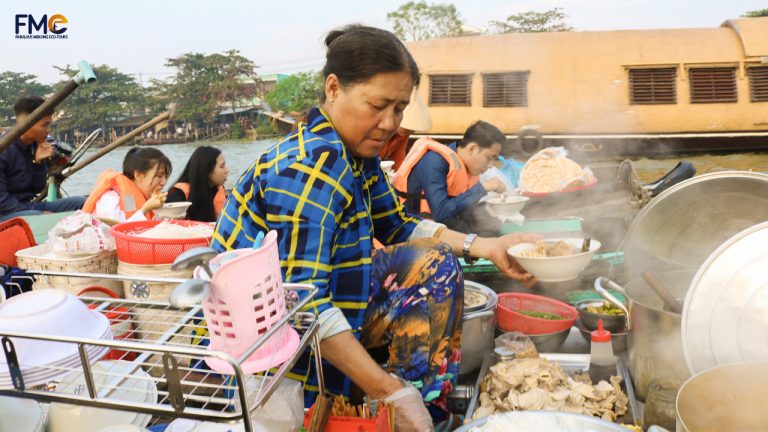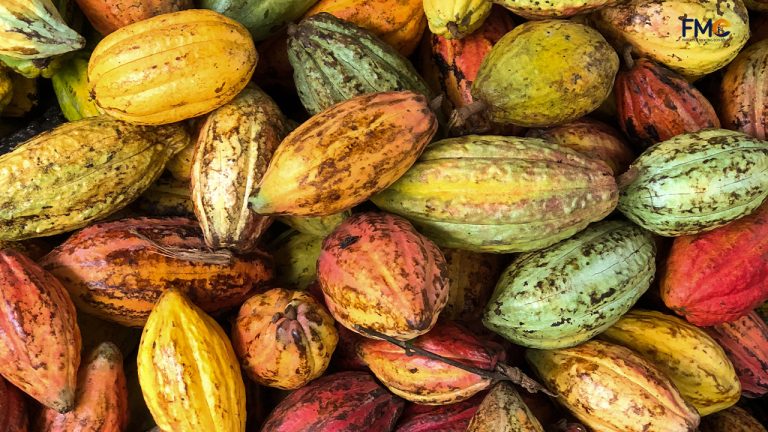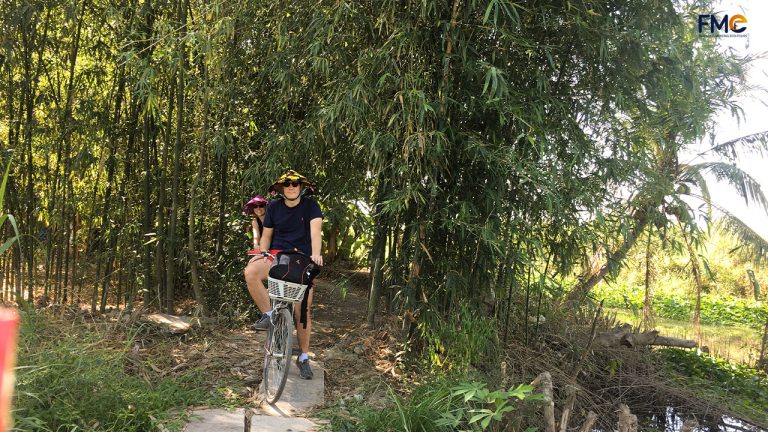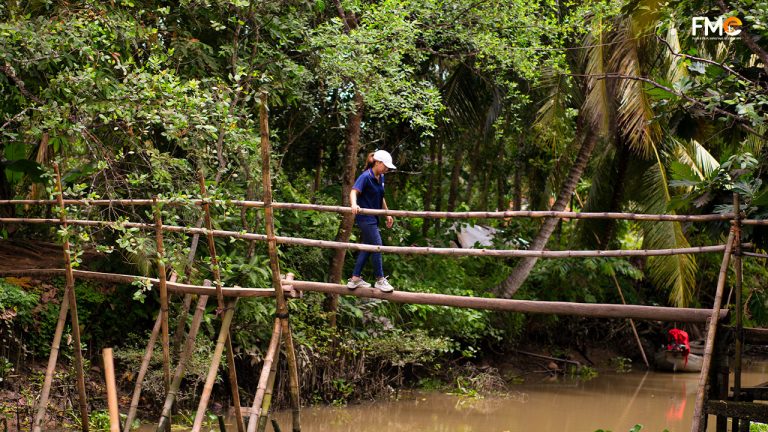Gian Gua relic in Can Tho, 150-year-old giant tree garden

The historical site of Gian Gua is one of the pride of Can Tho. Today, this is also a place to keep many heroic historical vestiges of the nation’s golden age. If you travel to Can Tho, try to visit this relic.

Here are the top 5 reasons that you should come to this Gian Gua relic once:
- You can admire the Malayan Banyan tree (a typical tree in the Mekong Delta’s wetland region) with looping branches that tangle together like enormous pythons which create broad, shaded tree canopies that provide a peaceful and refreshing atmosphere.
- Listening to local people share stories about the history of the Vietnamese nation, the story of the goddess who has blessed this land since its beginning, etc.
- This is your chance to learn about the history of the Vietnamese people.
- Visitors will participate in the festival, and visit the temple at the relic to better understand the culture and people here.
- Capturing the locals’ great moments when you join them for the festival.
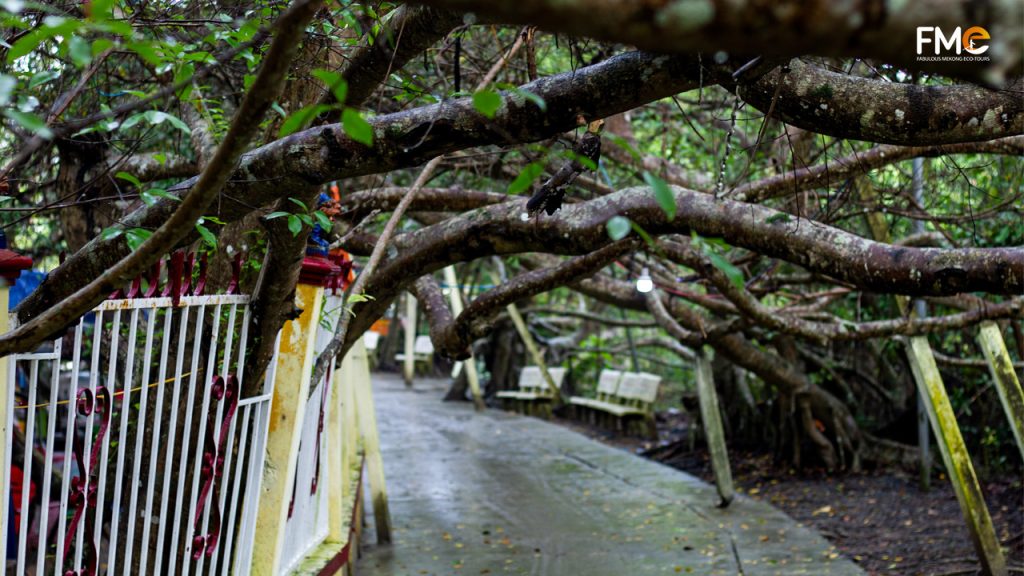
So now let’s find out about this Gian Gua historical relic site in Can Tho with Fabulous Mekong Eco-tours.
Discover Can Tho’s traditional places:
- Visit 40 years traditional rice noodle factory in Can Tho
- Muoi Cuong Cocoa Farm in Can Tho – Handcrafted Chocolates
Table of Contents
ToggleExplaining the name in Gian Gua relic
- Madame Thuong Dong Co Hi: According to the “Miếu Thờ ở Cần Thơ” (Published in 2019), Madame Thuong Dong Co Hi originated from the Cham culture and has been Vietnameseized. However, the people of Can Tho are unaware of her calendar and only know that she is a goddess with great power in deciding people’s blessings.
- Gian Gua: The name Gian Gua comes from the main tree here: “Gừa” or ficus tree (Ficus microcarpa). With many trunks and branches that are intertwined to form a giant canopy, people in the area call it “Gian Gua”.
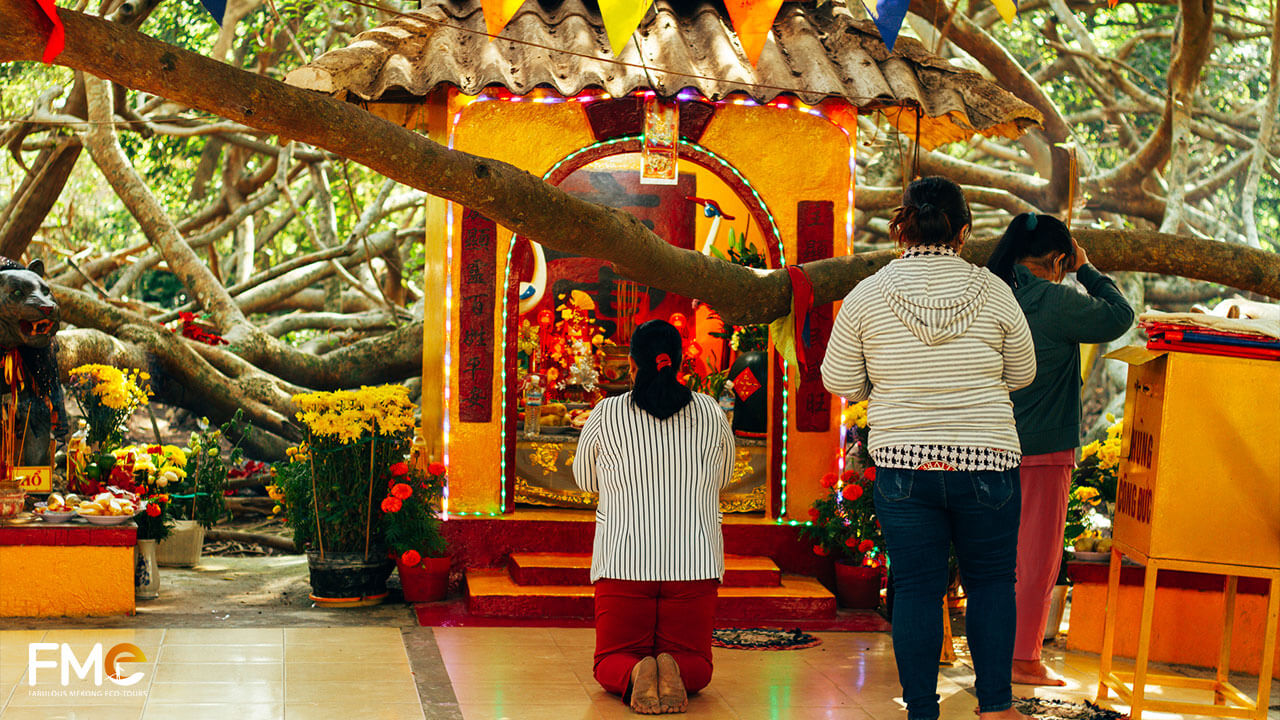
Things to experience in Gian Gua relic in Can Tho Enjoying the wild beauty of Gian Gua
From the outside looking in, the relic is covered in a cool green color. The Gian Gua area used to be very large, but due to the destruction of war bombs and the impact of environmental pollution, it is now only about 2,700 m2.
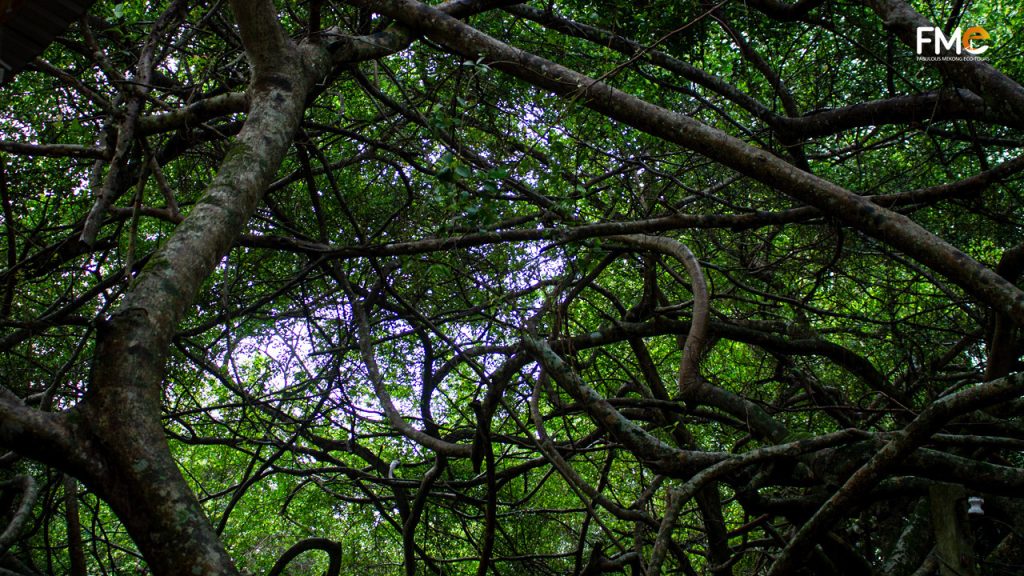
There is a ficus tree (Ficus microcarpa) in the area that is more than 150 years old and has developed many trunks and branches that are intertwined to form a large net, so people in the area call it “Gian Gua.” This tree currently has a net area of more than 2,700 m2 and an average height of about 39 feet (12 m).

Overcoming many times of bombardment, the tree is still sprouting, reaching out to develop. Walking around the forest, visitors will certainly feel relaxed and comfortable, enjoying the fresh, cool and peaceful air here.
Here, visitors should take out their cameras to take in the wild and magnificent nature of Gian Gua. Trees by trees, leaves by leaves, and the green cover all over the land.
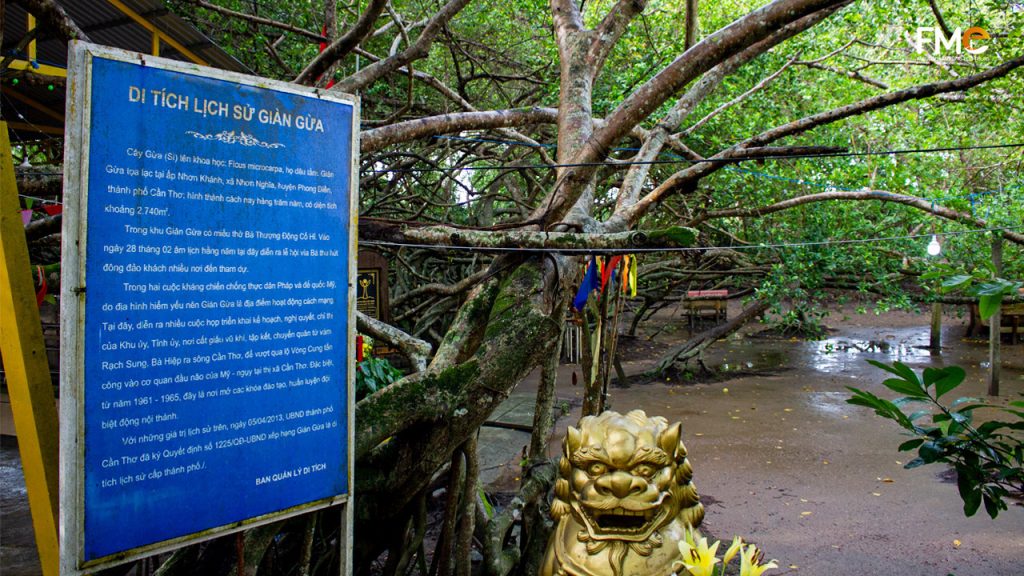
Joining festival in Gian Gua relic
Every year, there are 3 major festivals taking place on Vietnam’s War Invalids and Martyrs Day on July 27, the founding day of the Vietnam People’s Army on December 22, and the 28th day of the second lunar month in memory of Madame Thuong Dong Co Hi and other gods.
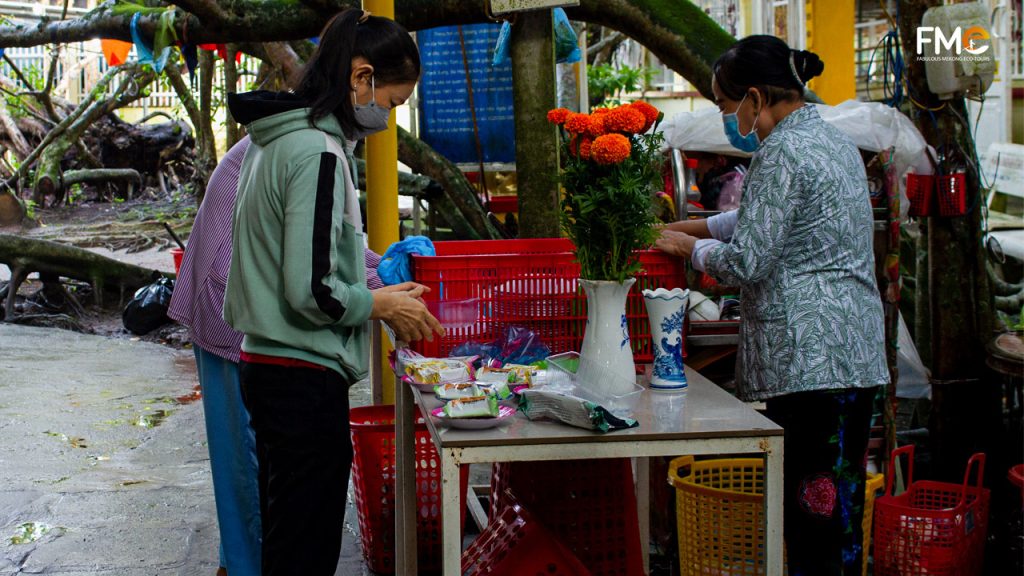
The anniversary was held with many exciting activities to pay respect to Madame Thuong Dong Co Hi, who is revered by the people as a benefactor of this sacred land. If you come to the Gian Gua festival, you will have the opportunity to learn about rituals of worship and offer them to the Madame and the gods.
In particular, visitors can experience the traditional dance, listen to Don Ca Tai Tu, and enjoy fresh fruit. This will definitely be an enjoyable experience when you come here.
Many tourists visit the Gian Gua relic in spring to enjoy the wild scenery close to the relic area, and there is also a place to send spiritual wishes for family peace, favorable work, and success in a prosperous new year. Not only that, the locals are extremely friendly and generous.
They always welcome visitors to Gian Gua, whether they have the festival or not. Specifically, tourists can have a chance to learn the entire story of Gian Gua’s history and its developments till today.
Visiting the temple of Madame Thuong Dong Co Hi
Gian Gua relic is also home to many legends, associated with the history of reclaiming and opening the realm of the Nguyen Dynasty and the history of the local people’s struggle against foreign invaders. Inside the relic area, there is a small temple to worship Madame Thuong Dong Co Hi.
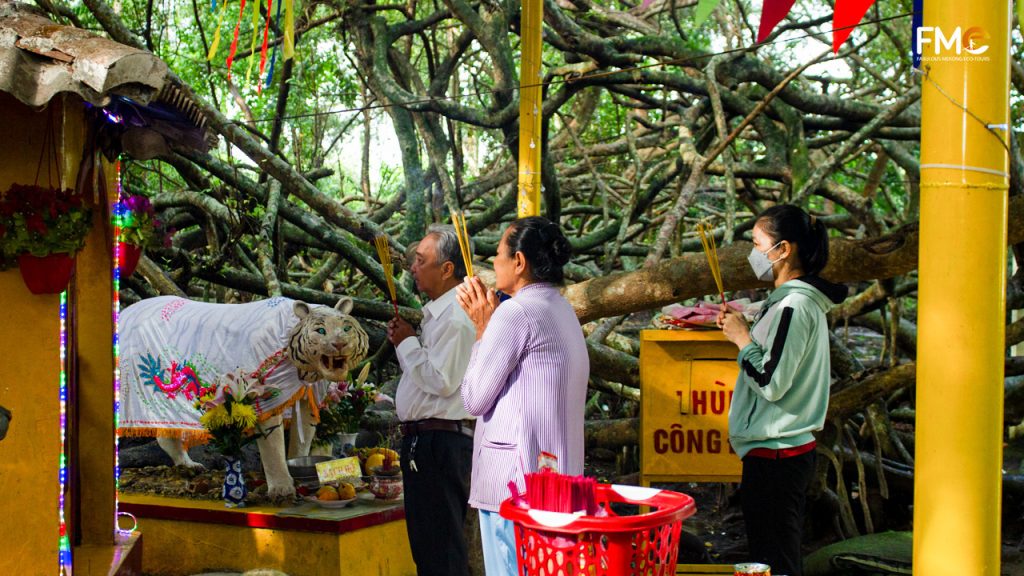
According to a folktale, in the 19th century, a Nguyen family from Tien River came to Nhon Nghia land to settle down in a village. Unfortunately, the forest caught fire during the excavation process, leaving the landscape desolate. Many people in the village suffer from strange diseases without any cure.
Then, a doctor from Chau Doc, An Giang arrived to bring medicine to the villagers. He indicated that this forest was sacred land, and Madame Thuong Dong Co Hi lived there. When the forest was destroyed, she was angry because she had nowhere to go.
The doctor suggested local people replant the tree and annually celebrate the goddess’ anniversary in order to settle down and have a peaceful career.
They had built a temple to worship Madame Thuong Dong Co Hi made out of bamboo and bamboo leaves. Unfortunately, the temple was destroyed during wartime. In 1996, the temple was rebuilt. Once again, it became a sacred place for people to return and worship the goddess.
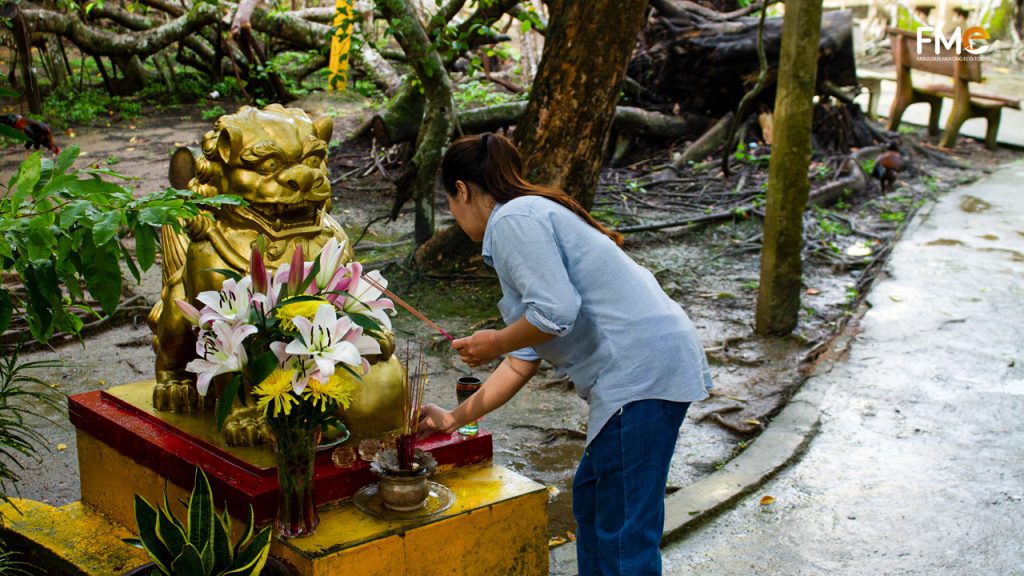
After six generations, the descendants of the Nguyen family continue to live on this land, taking turns preserving and decorating the place of worship.
Here, visitors can experience the culture of worshiping goddesses of people in Southern Vietnam. The locals believe that every forest, every mountain has a goddess living in it. From a wild forest, this place has become both an attractive tourist destination in Can Tho and a spiritual place for locals as well as tourists to come to pray for favorable weather, peaceful and convenient life.
History of Gian Gua relic in Can Tho
In the past, life in the new land was still difficult and needed spiritual support, so the Nguyen family built a temple of bamboo and bamboo leaves to worship Madame Thuong Dong Co Hi under the ficus tree and take the 28th day of the second lunar month every year as the anniversary.
On both sides of the temple, there are statues of the White Tiger and the Black Tiger as the guardians of Madame’s temple, guarding against evil spirits, and banishing all bad luck that happens to the villagers. Every year, on the 28th day of the second lunar month, members of the Nguyen family and others from near and far offer incense and worship Madame Thuong Dong Co Hi.
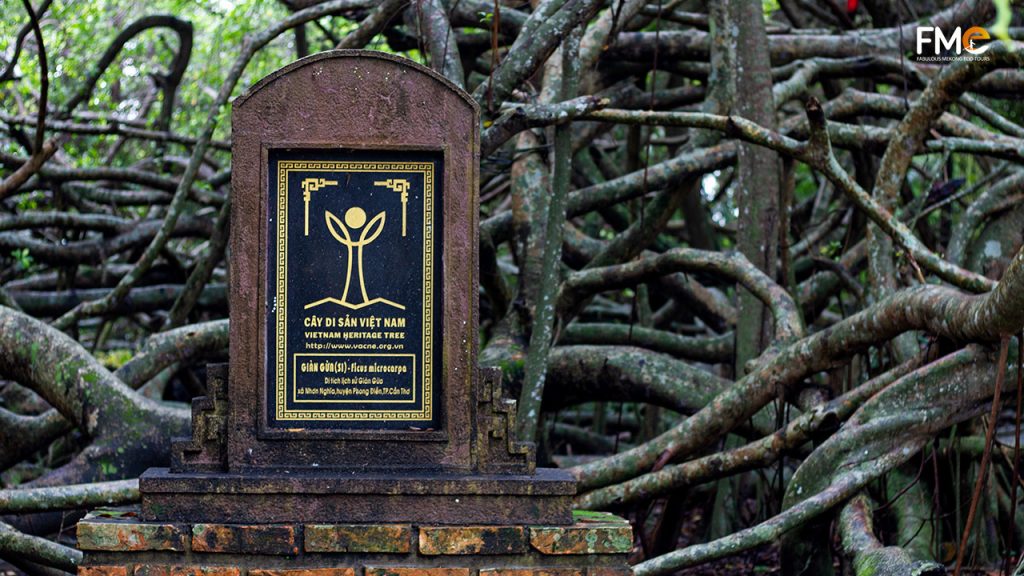
Unique things about the Gian Gua
- In 2013, Gian Gua was recognized as a city-level historical relic. It was also recognized by the Vietnam Association for the Protection of Nature and Environment as “Vietnam’s Heritage Tree”—the first Vietnamese Heritage Tree in the Mekong Delta was recognized.
- The annual worshiping festival of Thuong Dong Co Hi attracts about 10,000 visitors from provinces and cities in the Mekong Delta, Ho Chi Minh City, and foreign tourists.
- The Gian Gua relic is different from an ordinary tourist destination. Last year, to avoid the spread of the COVID-19 epidemic, the temple management board only held the worship ceremony, and not the festival. Most people in the Nguyen family and locals worship and return.
- Gian Gua was a monument accumulated by the Liberation Army of South Vietnam before 1975. Due to the dangerous and remote terrain, the whole forest had protected many soldiers from the heavy bombardment and assaults of the enemy. Even now, visitors can actually see the scars of war on most of the ficus trees in the area.
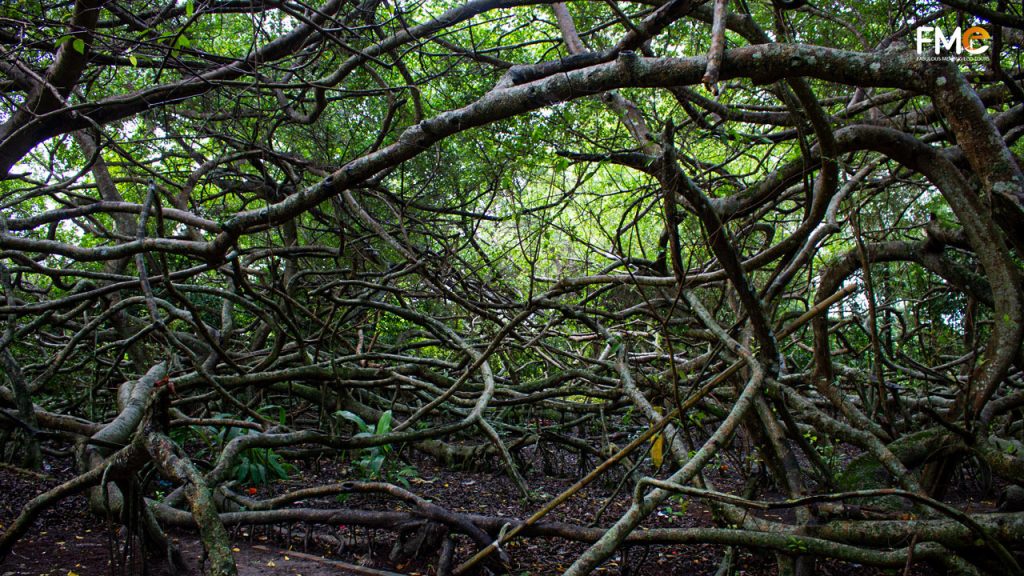
Where is to visit the Gian Gua relic
The historical relic site of Gian Gua is located in Nhon Khanh hamlet, Nhon Nghia commune, Phong Dien district, which is 11 kilometers from the center of Can Tho towards the Cai Rang district and then turns onto Highway 61C.
On the route to Gian Gua, you can choose to visit other tourist attractions such as Ninh Kieu pier or Cai Rang floating market. After the floating market tour, you can experience life in a traditional village in My Khanh tourist village. Southern Truc Lam Zen Monastery is the next temporary stop point before heading toward the Gian Gua relic.
You can visit Gian Gua relic in the daytime, Opening time is at 7:30 am and closes at 5:00 pm. But, this is our tip for a great time to visit here in the morning or evening to avoid the hot weather in the South of Viet Nam in the afternoon.
The best time to visit Gian Gua relic
You can visit this beautiful place all year round. However, if you are interested in local cultures and customs, you should come here on special occasions. Every year, three events are organized at the Gian Gua relic site.
- The first one will take place on July 27th, the Invalids and Martyrs’ Day.
- The second is on December 22, the establishment date of the Vietnam People’s Army. A small shrine was built to honor President Ho Chi Minh and the warriors and martyrs who gave their lives for the country.
- The final occasion is on the 28th day of the second lunar month, and it is dedicated to Madame Thuong Dong Co Hi and the gods. Every year, thousands of tourists from near and far visit the Can Tho historical site. This tourist attraction has had almost 8,000 people on the occasion of the Madame Thuong Dong Co Hi festival.

How to get to Gian Gua relic
According to the tourist map of Can Tho, visitors have 3 routes to choose from to reach the historical site of Gian Gua:
- Route 1- you can go by bike or Car: From the center of Can Tho, visitors can go straight on Highway 61 C to Vi Thanh. Then about 2km to Duong Hung gas station, turn left into a nearby alley. There will be signs directing you to the Gian Gua relic.
- Route 2- Go by bike: However, the second route is way more attractive than the first one. From the center of Can Tho, visitors can follow the direction of the Vong Cung – My Khanh route to the Phong Dien district. On the route, visitors can choose to enjoy other great destinations such as My Khanh tourist village or Southern Truc Lam Zen Monastery. Then, visitors can take the ferry trip from My Khanh to the commune of Nhon Nghia and ask the locals for the second path into the relic.
- Route 3- Go by boat and bicycle: In addition, visitors can also combine visiting Gian Gua with a tour of the Cai Rang floating market. First, visitors will go to Cai Rang floating market by boat, then visitors will go to a traditional rice noodles factory to experience making rice noodles. And visitors will ride bicycles to the Gian Gua relic.
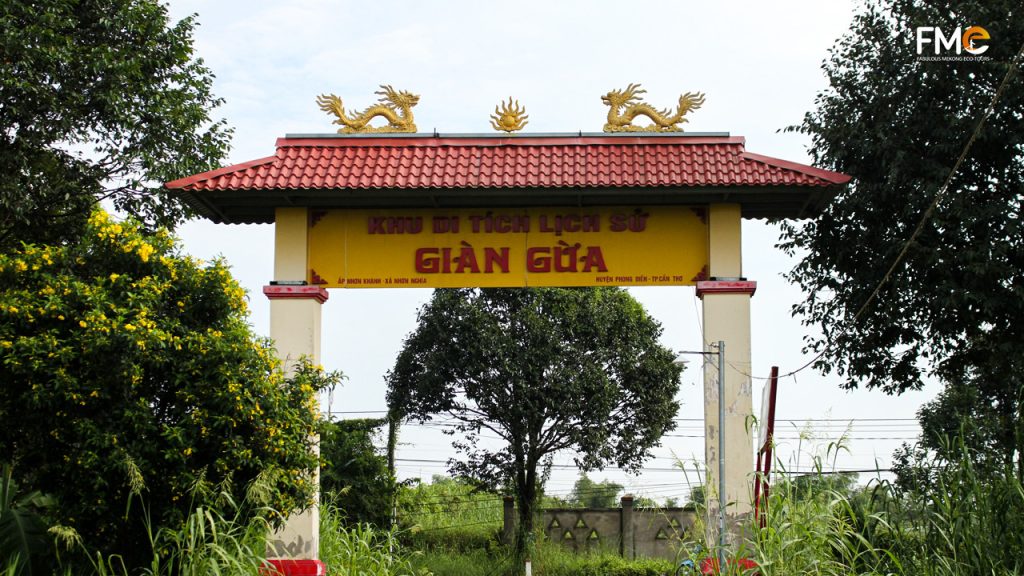
It differs from regular tours in which people have to sit inside a car and wait until they get to their destination. In the Mekong Delta, tourists are recommended to take a bicycle tour to visit Gian Gua.
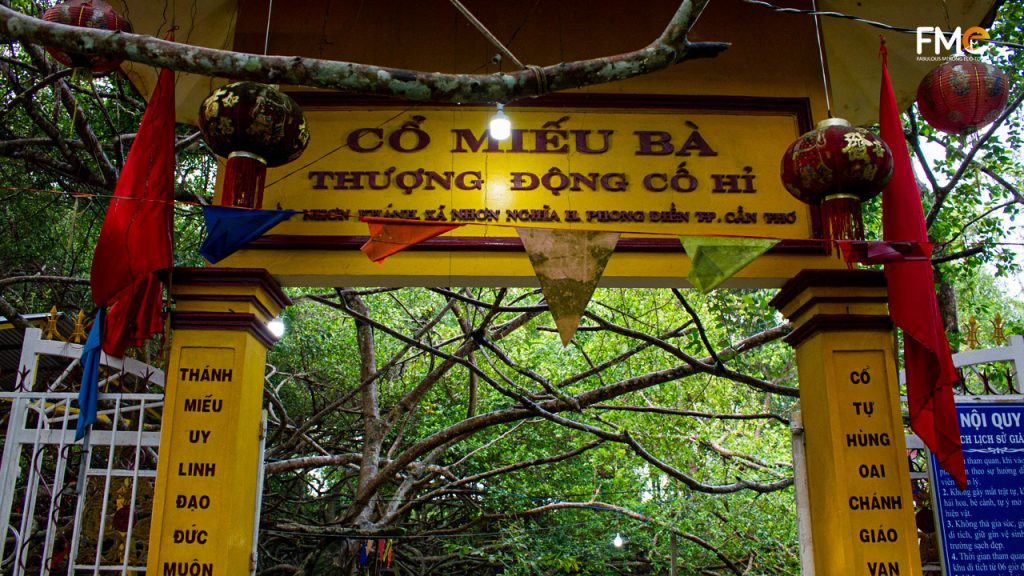
On the bike, you are flexible and free to visit any place you want while heading toward Gian Gua. Participating in Vietnam traffic, taking street food, and enjoying fresh air are considered the best experiences on the bicycle tour.
- Adress: Nhon Nghia, Phong Dien, Can Tho.
- Google Maps: https://goo.gl/maps/3jeRw7qxW9fMCeYQ7
Learn about Can Tho’s local cuisine: Nem Nuong – Vietnam Pork BBQ ROLLS in Can Tho.
Things visitors need to take into account
You should take into account some things before visiting the Gian Gua relic:
- Because this tour to Gian Gua is an eco-trip, visitors should book it through a reputable and quality eco-tourism company. Fabulous Mekong Eco-Tours is the best choice for those who need an English or France speaking tour guide with the ambition to bring visitors the most genuine pictures of this wonderful area of the Mekong Delta.
- Traveling on a bicycle or motorbike is the best choice. These two-wheeled bikes are one of the most affordable ways to explore both Gian Gua in particular and Can Tho in general.
- You should bring a hat, sunglasses, and sunblock, as well as a scarf during the dry season when you visit Gian Gua. If you are visiting the relic during the rainy season, bringing a jacket will be a requirement, as the forest looks stunning in both rain and sun.
- Because this is a relic area with a mix of spiritual beliefs and shrines, you should dress appropriately and keep noise to a minimum in order to preserve the environment of the heritage tree and sacred land.
- Do not climb, break branches or pollute the environment.
- Importantly, smoking is forbidden in the forest if you don’t want to cause another forest fire
- This attraction is free to enter, does not sell tickets, and is open all year round. The people are extremely friendly, they are the descendants of the Nguyen family that has looked after Gian Gua for a long time. Feel free to chat and ask interesting things about this Gian Gua heritage tree.
- Safety is a priority! Due to the large area of the forest, you should stick around with your tour guide or the locals if you don’t want to get lost. Although it isn’t dangerous when you get lost because the locals can easily find you, the situation may cause some distress for you and the others.
Take a tour in Can Tho and discover the local culture:
What do other travelers feel after they visit this Gian Gua in Can Tho
“Very interesting and worth a trip. Only about 30 minutes from Can Tho, the new road into there. Unfortunately, it’s getting old and the wood is starting to deteriorate Get down there soon.” – Phil Langdon
“Unique sightseeing place” – Miggy
“The cool, airy space and the sound of birdsong help relax the spirit. Crossed tree roots will produce very beautiful and magical pictures.” – Luong Minh
FAQ
Where is Gian Gua in Can Tho?
The historical relic site of Gian Gua is located in Nhon Khanh hamlet, Nhon Nghia commune, Phong Dien district, which is 11 kilometers from the center of Can Tho towards the Cai Rang district and then turns onto Highway 61C.
How much does it cost to visit the Gian Gua relic?
The entrance fee is free. You just spend money on booking the vehicle to come there.
What can visitors experience at Gian Gua historical relic site?
There are many fascinating activities that you can take part in here. Specifically, you can enjoy the wild beauty of Gian Gua, join festivals and visit the temple of Madame Thuong Dong Co Hi here.
What to wear when tourists visit Gian Gua historical relic site?
You can wear clothes you feel comfortable in but they are still discreet and polite. Besides, you should bring a hat, sunglasses, and sunscreen as well as a scarf in the dry season when visiting Gian Gua. If you are visiting the relic during the rainy season, bringing a jacket will be a requirement, as the forest looks stunning in both rain and sun.
What are the festivals in the Gian Gua relic?
Every year, there are 3 major festivals taking place on Vietnam’s War Invalids and Martyrs Day on July 27, the founding day of the Vietnam People’s Army on December 22, and the 28th day of the second lunar month in memory of Madame Thuong Dong Co Hi and other gods
When is the time to visit the Gian Gua relic?
The Gian Gua relic opens at 7:30 am and closes at 5:00 pm
TRAVEL STORIES AND NEWS
Explore Mekong Stories
The Most Popular Tours offered by FME Travel








